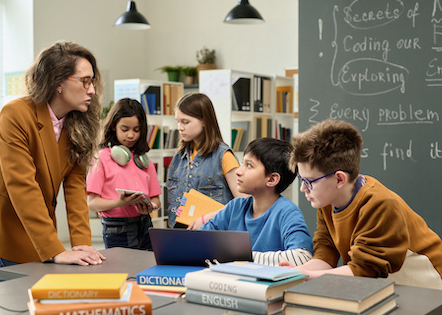Universal Design for Learning (UDL) is an educational framework that aims to make learning accessible to all students by offering multiple ways of engagement, representation, and expression. When integrated with personalized learning, UDL strengthens inclusivity and flexibility, allowing educators to support a wider range of learners. This powerful combination helps create a student-centered environment that respects individual differences while maintaining high expectations for all.
What Is Universal Design for Learning?
UDL is based on three core principles:
- Multiple Means of Engagement – Stimulating interest and motivation in different ways.
- Multiple Means of Representation – Presenting information in diverse formats.
- Multiple Means of Action and Expression – Allowing students to demonstrate learning through varied methods.
These principles align naturally with personalized learning’s focus on tailoring education to the needs and strengths of individual learners.
Enhancing Student Engagement
Personalized learning incorporates UDL’s first principle by offering students choices in how they interact with content. This might include:
- Selecting topics that interest them for research projects
- Using gamified tools or collaborative activities
- Adjusting learning goals based on readiness and motivation
When students are emotionally and intellectually engaged, they are more likely to invest in their education.
Presenting Content in Accessible Ways
UDL emphasizes the importance of presenting information through multiple channels. In a personalized learning environment, this can include:
- Using videos, infographics, and text to explain concepts
- Offering audio versions of written content
- Incorporating hands-on activities and real-world examples
These varied representations support comprehension and meet the needs of visual, auditory, and kinesthetic learners.
Encouraging Flexible Expression of Learning
One of the strengths of personalized learning is allowing students to choose how they demonstrate understanding. UDL reinforces this by:
- Supporting student-created videos, podcasts, or artwork as valid forms of assessment
- Encouraging written, oral, and performance-based tasks
- Using rubrics that focus on mastery rather than format
This flexibility empowers students to express what they know in ways that align with their abilities and interests.
Addressing Barriers to Learning
Both UDL and personalized learning aim to reduce barriers. By identifying obstacles early—whether they are related to language, physical access, or cognitive load—educators can:
- Adjust instruction methods
- Provide appropriate tools and accommodations
- Create supportive classroom environments that value every learner
This proactive approach leads to more equitable outcomes.
Leveraging Technology for Implementation
Technology plays a vital role in applying UDL within personalized learning. Digital platforms can:
- Track individual progress
- Offer adaptive content and real-time feedback
- Allow learners to access materials in preferred formats (e.g., text-to-speech, closed captions)
These features support differentiated instruction and give students greater control over their learning experience.
Conclusion
Integrating UDL principles into personalized learning creates a powerful framework for inclusive, student-centered education. By offering multiple ways to engage, learn, and express understanding, educators can design experiences that honor each learner’s unique strengths and challenges. As classrooms continue to evolve, this integration ensures that every student has the opportunity to succeed.













